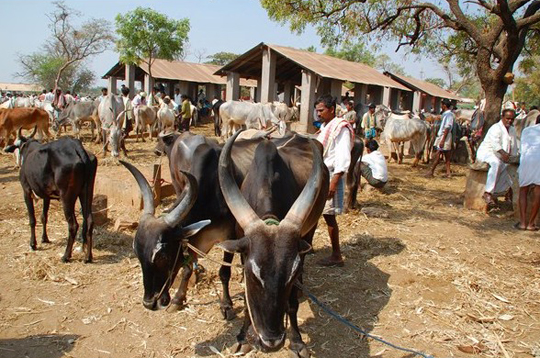Bengaluru, Feb 7: Chief Minister Siddaramaiah led Karnataka government has embarked on a first-of-its-kind climate change mitigation project that will see indigenous breeds of livestock - cattle and sheep - being protected, and augmented for posterity. The breeds of cattle and sheep chosen for the project have proven to be more adaptive to changes in the environment and climate variations.

The department of animal husbandry and veterinary services will implement the programme that is being undertaken, based on the findings of a research conducted by the Environmental Management and Policy Research Institute (EMPRI), Bengaluru. In the course of their study, EMPRI researchers found that indigenous breeds of cattle and sheep showed more resilience to fluctuations in climactic conditions in comparison to their crossbreed counterparts.
Director General of EMPRI Ritu Kakkar said that the state government had given its nod to the project, 'Conservation and management of indigenous varieties of livestock in the wake of climate change in Karnataka'. The estimated cost of the project is around Rs 24 crore. The project has been approved by the National Adaptation Fund for Climate Change, and one of the primary objectives of the project is to ensure that farmers, sheep rearers, cattle breeders can sustain their income by adopting methods resistant to adverse effects of climate change.
A report submitted by the Intergovernmental Panel on Climate Change (IPCC) shows that consecutive droughts is a symptom of climate change across the globe. Indigenous cattle in the state, which has been reeling under drought for the past three years, were found to be more productive in this period. Although crossbreed cattle are more productive under normal circumstances, lack of adequate fodder and soaring temperatures have an adverse impact on the quantity of milk they generate.
"Indigenous cattle breeds yield more milk under adverse conditions. They can subsist without adequate supply of fodder for longer durations than the crossbred varieties. Moreover, indigenous livestock, both cattle and sheep, are less susceptible to diseases as well. Local sheep breeds, for instance, adapt easily to drought conditions and are more immune to parasitic infections. Also, the mutton from these breeds is tender and more palatable," said a senior official from the animal husbandry department.
Propagation will be done using true to the breed animals in farms that are being developed for this exclusive purpose. The chosen cattle (Malnad Gidda, Hallikar and Deoni) and sheep (Bannur, Bellari and Deccani) breeds will be procured from their native tracts and reared in special farms, before they are handed over to farming communities.
As part of the project, the government is also working on ensuring adequate supply of fodder for livestock. Fodder production units will be established at two government farms at Kurikuppe in Ballari, and Kunikenahalli in Tumakuru. The fodder generated at these units will be supplied to 140 drought-prone areas that have been identified across the state.







Comments
Add new comment